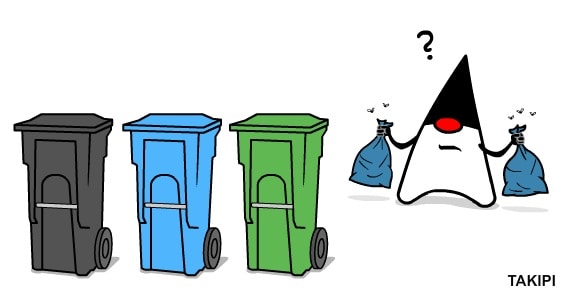Garbage Collectors - Serial vs. Parallel vs. CMS vs. G1 (and what's new in Java 8)
Join the DZone community and get the full member experience.
Join For FreeThe 4 Java Garbage Collectors - How the Wrong Choice Dramatically Impacts Performance
The year is 2014 and there are two things that still remain a mystery to most developers - Garbage collection and understanding the opposite sex. Since I don’t know much about the latter, I thought I’d take a whack at the former, especially as this is an area that has seen some major changes and improvements with Java 8, especially with the removal of the PermGen and some new and exciting optimizations (more on this towards the end).
1. The Serial Collector
The serial collector is the simplest one, and the one you probably won’t be using, as it’s mainly designed for single-threaded environments (e.g. 32 bit or Windows) and for small heaps. This collector freezes all application threads whenever it’s working, which disqualifies it for all intents and purposes from being used in a server environment. How to use it: You can use it by turning on the -XX:+UseSerialGC JVM argument,2. The Parallel / Throughput collector
Next off is the Parallel collector. This is the JVM’s default collector. Much like its name, its biggest advantage is that is uses multiple threads to scan through and compact the heap. The downside to the parallel collector is that it will stop application threads when performing either a minor or full GC collection. The parallel collector is best suited for apps that can tolerate application pauses and are trying to optimize for lower CPU overhead caused by the collector.3. The CMS Collector
Following up on the parallel collector is the CMS collector (“concurrent-mark-sweep”). This algorithm uses multiple threads (“concurrent”) to scan through the heap (“mark”) for unused objects that can be recycled (“sweep”). This algorithm will enter “stop the world” (STW) mode in two cases: when initializing the initial marking of roots (objects in the old generation that are reachable from thread entry points or static variables) and when the application has changed the state of the heap while the algorithm was running concurrently, forcing it to go back and do some final touches to make sure it has the right objects marked.4. The G1 Collector
The Garbage first collector (G1) introduced in JDK 7 update 4 was designed to better support heaps larger than 4GB. The G1 collector utilizes multiple background threads to scan through the heap that it divides into regions, spanning from 1MB to 32MB (depending on the size of your heap). G1 collector is geared towards scanning those regions that contain the most garbage objects first, giving it its name (Garbage first). This collector is turned on using the –XX:+UseG1GC flag.Java 8 and the G1 Collector
Another beautiful optimization which was just out with Java 8 update 20 for is the G1 Collector String deduplication. Since strings (and their internal char[] arrays) takes much of our heap, a new optimization has been made that enables the G1 collector to identify strings which are duplicated more than once across your heap and correct them to point into the same internal char[] array, to avoid multiple copies of the same string from residing inefficiently within the heap. You can use the -XX:+UseStringDeduplicationJVM argument to try this out.Java 8 and PermGen
One of the biggest changes made in Java 8 was removing the permgen part of the heap that was traditionally allocated for class meta-data, interned strings and static variables. This would traditionally require developers with applications that would load significant amount of classes (something common with apps using enterprise containers) to optimize and tune for this portion of the heap specifically. This has over the years become the source of many OutOfMemory exceptions, so having the JVM (mostly) take care if it is a very nice addition. Even so, that in itself will probably not reduce the tide of developers decoupling their apps into multiple JVMs.Opinions expressed by DZone contributors are their own.


Comments